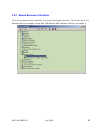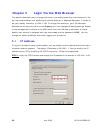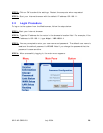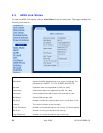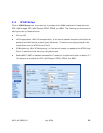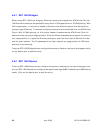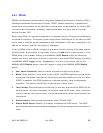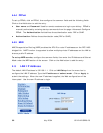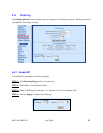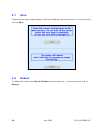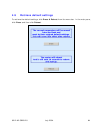6212-A2-GB20-20 July 2004 35
4.4.3 PPPoE
PPPoE provides session authentication using either Password Authentication Protocol (PAP) or
Challenge Handshake Authentication Protocol (CHAP). Session accounting is possible and
conservation of bandwidth can be achieved by closing down unused sessions. By utilizing PPP,
link and network parameters are easily negotiated between the router and the Internet
Service Provider (ISP).
When using PPPoE, the system is assigned an IP address from the ISP as part of establishing
the network connection. The system can be configured as a DHCP server for the LAN, and NAT
can be used to translate private addresses to public addresses. In this way, computers in the
LAN do not have to have their own public IP addresses.
To set up PPPoE, click on PPPoE, configure the common fields on the top of the page and the
following fields. At the bottom of the screen, click on the Add button to add the entry. If the
PPPoE mode is set to auto, clicking on the MANUAL MODE Enable button will effectively
disable auto-mode, and require the user to reconnect a terminated PPPoE session by clicking
the MANUAL MODE Trigger button. Subsequently, to return to auto-mode, click on the
MANUAL MODE Disable button, which will appear in place of the MANUAL MODE Enable
button.
User name/Password: Used for remote customers to login during dialup.
Mode: Direct and Auto. If the mode is set to AUTO, the PPPoE negotiation automatically
starts when the system identifies any traffic required to be transferred on the link. When
DIRECT is selected, the PPPoE negotiation is started manually using the pppoestart
command. The default is AUTO with an idle timeout of 30 minutes.
Idle Timeout: Defines the period of idle time (in minutes) after which the PPPoE link will
be terminated. This field is necessary to configure under AUTO mode. After a period of
inactivity (equal to the timeout value), the device automatically disconnects the user from
the network.
Authentication: Defines the authentication code: PAP and CHAP.
Enable DHCP Server: Enables (if checked) or disables the DHCP server. The DHCP
server dynamically allocates network addresses and delivers configuration parameters to
hosts.



